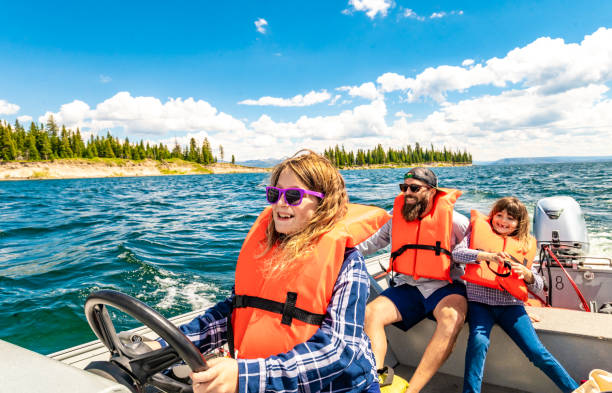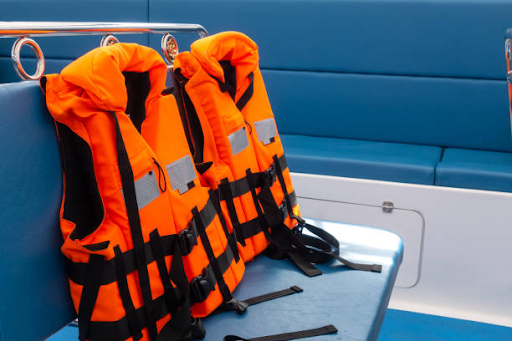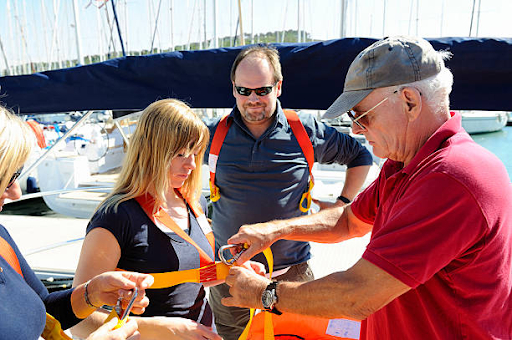Sailing is a thrilling escape that combines the serenity of the open sea with the excitement of discovery. Exploring the Croatian coastline takes this experience to a whole new level, offering crystal-clear waters, hidden coves, and charming seaside villages to uncover.
Sailors who want to explore Croatia’s ocean coastline often express concerns about their safety at sea. A sailing trip offers memorable adventures while delivering panoramic ocean views, yet proper sailing safety guidelines are essential for enjoyable cruises. The type of group you travel with determines the importance of your safety preparations.
Prepare safety equipment for each boat, check weather conditions before your trip, and provide suitable life jackets for all passengers. Convey safety instructions to all passengers and perform man-overboard emergency drills frequently.
People who want to sail without worry should continue reading the following sailing in Croatia guide and boat safety checklists, which will make sailing fun and safe.

Understanding Sailing Safety Basics
Sailing safety becomes essential since Croatian waters showcase diverse terrain and unpredictable weather patterns. Fundamental sailing safety concepts help prevent navigational incidents and promote peaceful sea travel.
Before departure, you must understand your boat’s operational elements, safety equipment locations, and boat command functions. A hull inspection should be performed to detect cracks while checking rigging and verifying that mechanical components operate smoothly.
All passengers require a complete safety briefing before embarking. Teach all passengers about lifejacket usage and demonstrate emergency exits before explaining the necessary steps if someone goes overboard.
Understanding right-of-way rules and speed limits established by navigation rules constitutes an essential safety element. Your boat needs updated nautical charts, and you must verify GPS and compass performance accuracy. Abiding by these rules safeguards boats from collisions and protects individuals from paying fines and penalties.
Essential Sailing Tips And Tricks: Sail Safely
Proper preparation and the right gear can prevent most sailing accidents. Here are some essential sailing tips and tricks to ensure safety:
- Check Weather Forecasts: Weather conditions can change rapidly at sea. Use reliable sources to monitor wind speeds, tides, and potential storms. Avoid setting sail if storms are predicted.
- Life Jackets: Each passenger should carry a properly fitting life jacket. Sailing along coastal areas and offshore waters requires the implementation of automatic floating life jackets for improved safety measures. Store them in easily accessible locations.
- Communication Devices: Your boat needs a VHF radio and training on how to use it. A satellite phone should be considered for emergency communication in remote locations. Before any voyage, check that all devices operate correctly.
- Man-Overboard Drills: Regular execution of these drills is crucial. Passengers must receive assigned roles in emergency drills to understand what actions they need to perform. Before recovering someone, throw a life flotation device and keep a boat hook ready for better safety.
How to Enhance Your Sailing Experience with Proven Safety Practices
Developing better sailing skills will safeguard your safety and create journeys that bring greater comfort and increased confidence.
- Outcomes of regular maintenance checks on sails, ropes, engines, and hull structures reduce the probability of mechanical failures within maritime operations. Your checks should include inspections of fuel containers as well as measurements of oil levels and battery health status.
- Monitoring weather patterns and maritime conditions accurately happens through dependable marine smartphone applications. Combining weather pattern observation with wind direction analysis and tidal modulation helps sailors make intelligent decisions.
- Advanced sailing classes teach competitors to execute complicated sailing techniques such as tacking, jibing, and emergency response skills that prove essential when conditions become difficult.
- A structured communication system enables boat crew members to understand their assigned tasks when performing docking procedures, anchoring operations, and responding to emergency scenarios. Ongoing practice creates both dependable relationships between sailors and efficient team operations.
- The correct handling of equipment requires boat operators to learn how VHF radios function while also mastering distress signals, fire extinguisher operations, and first aid skills. All safety equipment must receive periodic updates along with proper testing.
- Mastering traditional compass and chart navigation alongside modern GPS systems makes you ready to function even when technology breaks down.
- Supplementing power sources with solar panels and backup batteries ensures a continuous energy supply, which prevents power depletion during multiday trips. Switching off unnecessary electronics helps save energy, contributing to higher energy resources.
- Float plans are prepared beforehand and shared with trusted contacts to secure emergency assistance. Ships that practice these safety measures achieve safer navigation and better seaworthiness because they minimize stress and reduce maritime uncertainty.

Safety Equipment Checklist For Boats: Don’t Miss Out
A complete list of safety equipment required for boats is vital because it allows efficient treatment of boat emergencies.
- Fire Extinguishers: Boats requiring multiple marine-rated fire extinguishers must especially have them on board, particularly the largest ones. Safety equipment should be mounted in easily reachable spots.
- First Aid Kit: Include bandages, antiseptics, pain relievers, seasickness tablets, and a thermal blanket. Regularly check and restock the kit.
- Flares and Signaling Devices: Ensure they are within expiry dates and store them in a dry, accessible place. Learn how to use them correctly.
- VHF Radio and GPS System: Test communication and navigation systems before each trip. Save emergency contacts, including the Croatian Coast Guard.
- Anchor with Adequate Chain: Ensure your anchor suits the seabed type. A longer chain offers better holding power.
Sailing in Croatia: A Quick Guide
The sailing paradise in Croatia consists of its coastline filled with crystal-clear waters and more than a thousand islands. Here’s how to sail safely:
- Mooring Guidelines: Check mooring guidelines by sticking to authorized areas, safeguarding marine species, and preventing ticket penalties. Sail Istria provides professional guidance about local mooring rules for simple, trouble-free procedures.
- Local Regulations: Every boater must comply with the carefully enforced speed rules and protected areas of Croatia. Learning local regulations will protect you from receiving penalties.
- Emergency Contacts: Save numbers for the Croatian Coast Guard and local marinas. Sail Istria offers its clients emergency contact assistance and current marine condition reports.

Planning a Family Boating Trip
Operating a boat with family members demands a proper planning process along with essential safety precautions. Ensuring everyone’s safety on board starts with a well-prepared checklist and effective communication.
- Kid-Safe Gear: Equip children with life jackets and safety harnesses. Safety netting across the guardrails acts as an accident prevention measure. Packing floating toys and waterproof bags for kids’ belongings is also wise.
- Sun Protection: Use sunscreen with high SPF, hats, and a Bimini top for shade. Bring bottled water to prevent dehydration during boating trips. Polarized sunglasses are great for reducing glare.
- Entertainment: Family boating trips need planning events to make the visit entertaining. Consider bringing snorkeling gear and water-safe games to keep kids engaged.
- Safety Drills for Children: Safety drills should be both entertaining and instructive. Children need lessons to detect emergencies and proper training on life jacket use. Make drills fun yet informative by using whistles or signaling devices.
Checklist for Boat Safety
Having a reliable boat safety checklist helps you prepare for every maritime condition.
- Hull and Rigging Inspection: Examine cracks, loose components, and damaged ropes throughout your inspection. Regular maintenance prevents severe issues during maritime activities.
- Navigation Lights for Night Sailing: Ensure functioning navigation lights to help avoid collisions at sea.
- Fuel and Engine Check: Inspect your fuel supply and engine condition before boating operations. Ensure adequate fuel reserves for possible delays. Test the engine and inspect oil levels and coolant at the dock.
- Safety Protocol Rehearsal: Rehearse all safety protocols with crew members. Sail Istria offers beginner briefings before trips to teach vital safety measures for a stress-free journey.
Experience Safe Sailing Adventures with Sail Istria
Sail Istria delivers top-tier sailing adventures on Croatia’s popular coastline, where people can discover beautiful islands and experience pristine seascapes and underwater splendor. Family, group, and married couples can join expertly guided sailing tours offered by the company, which prioritize safety and comfort during their memorable trips at sea.
Professionals lead every sailing trip while delivering essential safety instructions to both followers and providing a thorough checklist for boat safety equipment. Users can find detailed information about sailing in Croatia through the website guide, which explains current regulations and shows locations to tie up and emergency contact numbers. Sail Istria enhances its eco-friendly operations and updated fleet technology to create an exceptional adventure that draws travelers searching for sea exploration on the Adriatic.
Every sailing trip at Sail Istria offers views of natural wonders and cultural legacies throughout the voyage, day or night. The sailing experiences provided by Sail Istria become unforgettable because they offer flexible packages and dedicated service to ensure guests enjoy both safety and ease of sail and lasting memories.
Conclusion
Understand that sailing delivers liberating experiences while demanding total safety precautions as an integral part. With proper preparation and these sailing safety principles, you will achieve smooth adventures at sea.
Partnering with Sail Istria provides professional direction and reliable equipment, ensuring safe routes across Croatia’s coastline.
Are you ready to experience exciting sailing while maintaining absolute security as your primary objective? Plan your next adventure with Sail Istria now!